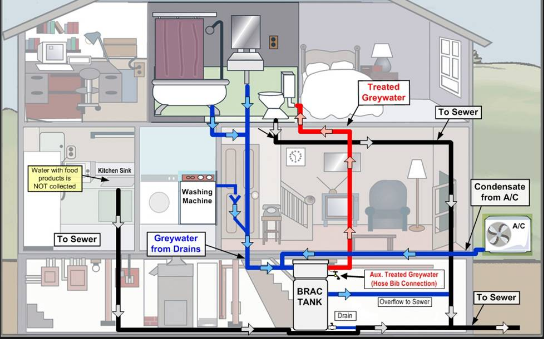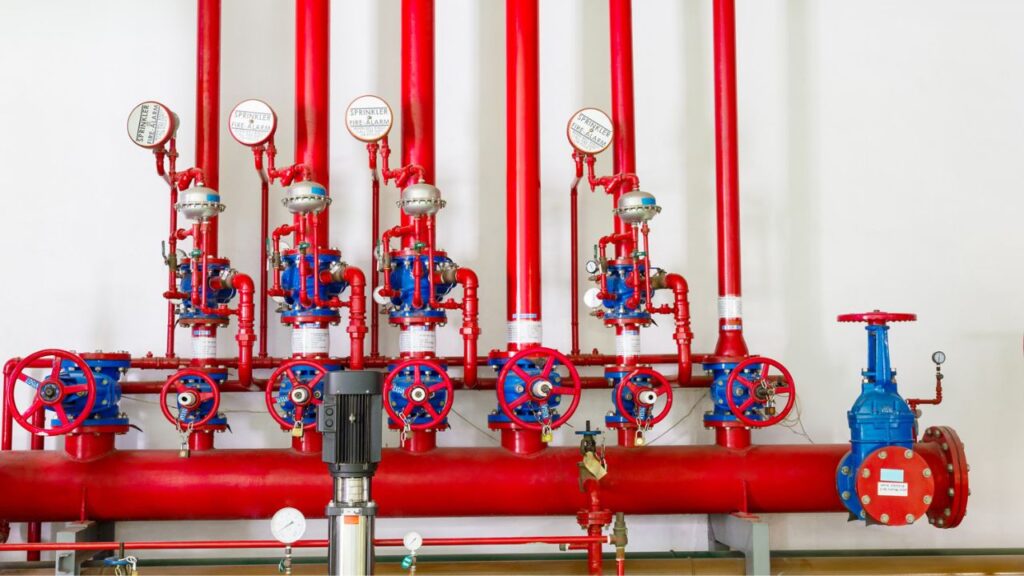The content further down in relation to Understanding Your Home's Plumbing Anatomy is especially remarkable. You should investigate it.

Comprehending how your home's pipes system works is essential for each house owner. From providing clean water for alcohol consumption, cooking, and showering to securely getting rid of wastewater, a properly maintained pipes system is crucial for your family's health and wellness and convenience. In this comprehensive guide, we'll check out the intricate network that comprises your home's plumbing and offer tips on upkeep, upgrades, and dealing with common problems.
Introduction
Your home's pipes system is greater than just a network of pipelines; it's a complicated system that ensures you have accessibility to clean water and efficient wastewater elimination. Knowing its elements and just how they collaborate can help you stop expensive repair work and ensure everything runs efficiently.
Standard Parts of a Plumbing System
Pipes and Tubes
At the heart of your pipes system are the pipelines and tubing that lug water throughout your home. These can be made from different products such as copper, PVC, or PEX, each with its benefits in regards to durability and cost-effectiveness.
Fixtures: Sinks, Toilets, Showers, etc.
Fixtures like sinks, bathrooms, showers, and tubs are where water is utilized in your house. Comprehending just how these components attach to the pipes system aids in detecting issues and preparing upgrades.
Valves and Shut-off Points
Shutoffs regulate the circulation of water in your pipes system. Shut-off valves are important throughout emergencies or when you need to make repairs, permitting you to separate parts of the system without interrupting water flow to the whole house.
Water System
Main Water Line
The primary water line connects your home to the metropolitan water or a personal well. It's where water enters your home and is dispersed to numerous fixtures.
Water Meter and Stress Regulator
The water meter actions your water usage, while a stress regulator makes certain that water flows at a secure pressure throughout your home's pipes system, preventing damages to pipelines and components.
Cold Water vs. Hot Water Lines
Comprehending the difference between cold water lines, which provide water directly from the primary, and hot water lines, which bring warmed water from the water heater, aids in troubleshooting and preparing for upgrades.
Water drainage System
Drain Pipes and Traps
Drain pipes lug wastewater away from sinks, showers, and bathrooms to the sewage system or septic tank. Catches protect against sewer gases from entering your home and likewise catch debris that might create clogs.
Ventilation Pipes
Ventilation pipes permit air into the drainage system, preventing suction that could slow drainage and cause traps to empty. Proper air flow is necessary for keeping the honesty of your plumbing system.
Significance of Correct Water Drainage
Making certain correct water drainage protects against back-ups and water damages. Consistently cleansing drains pipes and keeping catches can stop expensive repairs and expand the life of your pipes system.
Water Heater
Kinds Of Water Heaters
Water heaters can be tankless or traditional tank-style. Tankless heating units warmth water as needed, while storage tanks keep heated water for immediate usage.
Exactly How Water Heaters Link to the Pipes System
Recognizing exactly how water heaters connect to both the cold water supply and warm water circulation lines assists in diagnosing problems like insufficient hot water or leakages.
Maintenance Tips for Water Heaters
Routinely flushing your hot water heater to remove debris, inspecting the temperature setups, and inspecting for leakages can extend its life-span and boost energy effectiveness.
Common Plumbing Concerns
Leaks and Their Causes
Leakages can happen as a result of maturing pipelines, loose installations, or high water stress. Dealing with leakages without delay avoids water damages and mold growth.
Obstructions and Blockages
Blockages in drains and bathrooms are often triggered by purging non-flushable things or a buildup of oil and hair. Making use of drain displays and being mindful of what decreases your drains can stop obstructions.
Signs of Plumbing Problems to Watch For
Low tide stress, slow-moving drains, foul odors, or uncommonly high water expenses are indicators of prospective pipes troubles that should be dealt with immediately.
Pipes Upkeep Tips
Regular Examinations and Checks
Set up yearly pipes assessments to capture concerns early. Look for signs of leakages, deterioration, or mineral buildup in faucets and showerheads.
DIY Maintenance Tasks
Easy tasks like cleaning tap aerators, looking for toilet leaks making use of color tablet computers, or protecting subjected pipes in chilly climates can stop major plumbing issues.
When to Call a Professional Plumbing Technician
Know when a pipes concern requires expert know-how. Trying complicated repair work without appropriate knowledge can result in more damage and higher repair prices.
Updating Your Plumbing System
Reasons for Upgrading
Upgrading to water-efficient components or changing old pipelines can boost water top quality, lower water costs, and boost the value of your home.
Modern Plumbing Technologies and Their Benefits
Discover modern technologies like wise leak detectors, water-saving commodes, and energy-efficient water heaters that can save cash and reduce environmental influence.
Price Factors To Consider and ROI
Determine the in advance costs versus long-term savings when thinking about plumbing upgrades. Lots of upgrades pay for themselves with lowered energy bills and less repairs.
Environmental Influence and Conservation
Water-Saving Components and Appliances
Setting up low-flow taps, showerheads, and toilets can substantially reduce water usage without giving up performance.
Tips for Reducing Water Usage
Basic behaviors like fixing leakages quickly, taking much shorter showers, and running full loads of laundry and meals can save water and lower your utility expenses.
Eco-Friendly Pipes Options
Think about sustainable pipes materials like bamboo for flooring, which is durable and eco-friendly, or recycled glass for countertops.
Emergency Preparedness
Actions to Take During a Pipes Emergency situation
Know where your shut-off valves are located and just how to turn off the water in case of a ruptured pipe or major leak.
Relevance of Having Emergency Situation Calls Helpful
Maintain call information for regional plumbing technicians or emergency solutions easily available for fast reaction throughout a plumbing situation.
DIY Emergency Fixes (When Relevant).
Temporary solutions like utilizing duct tape to patch a leaking pipe or positioning a pail under a trickling tap can reduce damages till a professional plumbing professional gets here.
Verdict.
Comprehending the composition of your home's pipes system encourages you to preserve it efficiently, saving money and time on repair services. By following routine maintenance regimens and staying educated regarding modern plumbing technologies, you can ensure your pipes system runs effectively for years to come.
Understanding Your Home Plumbing System: A Comprehensive Guide
Plumbing System: The Lifeline of Your Home
At its core, the plumbing system is designed to perform two primary functions: bring fresh water into your home and remove wastewater. The system is a network of pipes, fixtures, and other components that transport water and sewage. Residential plumbing systems include potable water supply lines, drain-waste-vent (DWV) systems, and various plumbing fixtures that make water use in daily tasks possible.
Key Components:
Water Supply: This part of your plumbing system brings municipal water into your home, passing through the main water supply line. It s responsible for supplying all water needs, from drinking to bathing.
Drainage System: It carries waste and water away from your home to the sewer or septic system. This system includes all the piping within your home that leads to external sewage or septic systems.
Vent System: An essential yet often overlooked component, the vent system allows sewer gases to escape and lets air into the drainpipes, ensuring water and waste move correctly through the system.
Fixture: More Than Just Taps and Toilets
Plumbing fixtures are the most interactive parts of the plumbing system, including faucets, showers, toilets, and sinks. Each fixture is connected to the plumbing system and plays a role in either the delivery of freshwater or the disposal of waste and wastewater.
Types of Fixtures:
Faucets and Sinks: Used for washing hands, dishes, and other daily water needs.
Toilets: Dispose of human waste through the sewage system.
Bathtubs and Showers: Provide bathing facilities, requiring both hot and cold water supply.
Water Supply: The Source of Life
The water supply system is a critical component, ensuring that potable water is available throughout your home for various uses, including drinking, cooking, and cleaning. This system consists of pipes that distribute water to different parts of the house, controlled by valves to regulate the water flow.
Types of Plumbing: Materials and Methods
Various types of plumbing systems and materials are used in residential settings, each with its advantages and applications. From copper and PVC pipes for water supply to cast iron and ABS for drainage, the choice of materials can impact the longevity and efficiency of your plumbing system.
https://intownplumbingtx.com/articles/home-plumbing-system-guide/

Understanding Your Home Plumbing System: A Comprehensive Guide
Plumbing System: The Lifeline of Your Home
At its core, the plumbing system is designed to perform two primary functions: bring fresh water into your home and remove wastewater. The system is a network of pipes, fixtures, and other components that transport water and sewage. Residential plumbing systems include potable water supply lines, drain-waste-vent (DWV) systems, and various plumbing fixtures that make water use in daily tasks possible.
Key Components:
Water Supply: This part of your plumbing system brings municipal water into your home, passing through the main water supply line. It s responsible for supplying all water needs, from drinking to bathing.
Drainage System: It carries waste and water away from your home to the sewer or septic system. This system includes all the piping within your home that leads to external sewage or septic systems.
Vent System: An essential yet often overlooked component, the vent system allows sewer gases to escape and lets air into the drainpipes, ensuring water and waste move correctly through the system.
Fixture: More Than Just Taps and Toilets
Plumbing fixtures are the most interactive parts of the plumbing system, including faucets, showers, toilets, and sinks. Each fixture is connected to the plumbing system and plays a role in either the delivery of freshwater or the disposal of waste and wastewater.
Types of Fixtures:
Water Supply: The Source of Life
The water supply system is a critical component, ensuring that potable water is available throughout your home for various uses, including drinking, cooking, and cleaning. This system consists of pipes that distribute water to different parts of the house, controlled by valves to regulate the water flow.
Types of Plumbing: Materials and Methods
Various types of plumbing systems and materials are used in residential settings, each with its advantages and applications. From copper and PVC pipes for water supply to cast iron and ABS for drainage, the choice of materials can impact the longevity and efficiency of your plumbing system.
https://intownplumbingtx.com/articles/home-plumbing-system-guide/
Do you like reading up on ? Try leaving a comment further down. We'd be glad to listen to your insights about this blog post. We hope to see you back again before long. Liked our blog? Please share it. Let others locate it. I truly appreciate your readership.
About